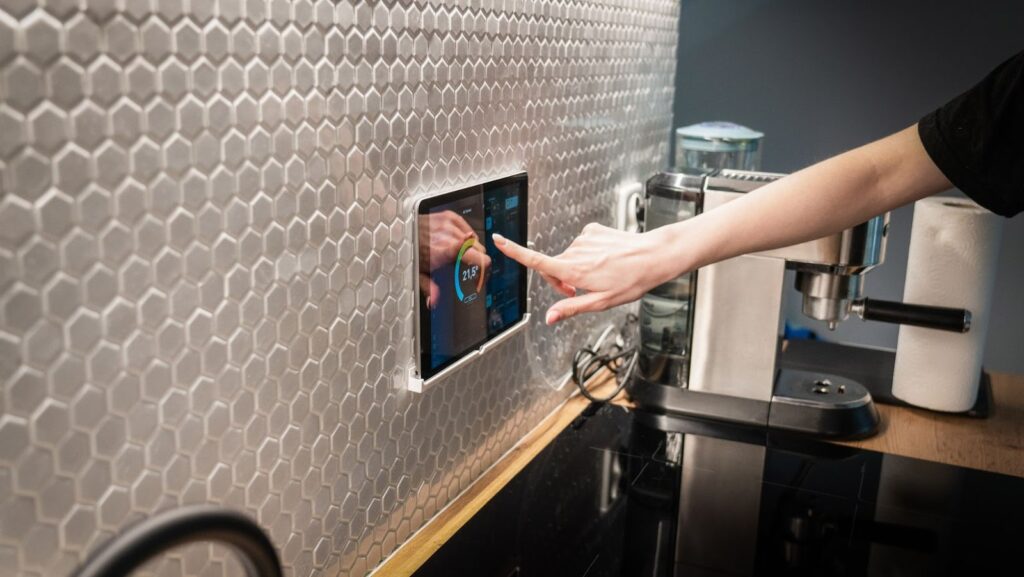In today’s tech-driven world, smart home devices are revolutionizing how we manage our living spaces. From voice-activated assistants to automated cleaning robots, the convenience and efficiency these gadgets bring can’t be overstated. They not only enhance home security but also contribute to energy savings and improve daily life by learning and adapting to the homeowners’ lifestyle preferences.
Smart Home Device Trends
Smart home device trends continuously evolve, integrating more sophisticated technology designed to enhance lifestyle and improve home management. These trends reflect consumer demand for more convenience, security, and energy efficiency.
Voice-Controlled Assistants
Voice-controlled assistants have revolutionized the way interactions occur within the home environment. Devices like Amazon Alexa, Google Assistant, and Apple Siri enable users to perform a variety of tasks hands-free, such as setting reminders, playing music, or controlling other smart devices. Enhanced with AI, these assistants learn from user interactions to offer more personalized responses and services, making everyday tasks simpler.

Smart Lighting Systems
Smart lighting systems are a cornerstone of home automation, offering both energy efficiency and convenience. Systems like Philips Hue and LIFX provide users with the ability to control lighting remotely via smartphone apps or voice commands. Beyond basic on and off capabilities, these systems allow users to adjust brightness, change colors, and set schedules—transforming the atmosphere of a home to suit any mood or occasion. Energy savings are also significant, as these LEDs are more efficient and can be programmed to reduce usage during hours of low activity.
Benefits of Integrating Smart Devices
Increased Security and Safety
Smart home devices significantly boost homeowners’ security and safety. Security systems such as Ring and Google Nest integrate cameras, motion sensors, and automated alerts that inform homeowners about any unusual activity, regardless of their location. If a security breach occurs, the system alerts them immediately, facilitating rapid response to potential threats. Furthermore, smart smoke detectors and carbon monoxide monitors provide early warnings, drastically reducing the risk of disaster.
Enhanced Energy Efficiency
Smart thermostats like the Ecobee and Nest Learning Thermostat adjust home temperatures based on residents’ habits and the external weather conditions. These devices learn user preferences and optimize heating and cooling schedules to maximize comfort while minimizing energy use. Such adjustments typically lead to significant reductions in utility bills, thus highlighting the cost effectiveness of smart home technology.
Remote Home Management
The ability to manage home functions remotely is another vital benefit of smart home integration. Devices such as smart locks and garage door openers allow homeowners to control access to their property from anywhere in the world via their smartphones. This feature is particularly useful for managing deliveries or granting access to guests without physical presence.
Comfort and Convenience
Smart devices cater to individual preferences in comfort and convenience, creating a highly personalized living environment. For instance, smart lighting systems adjust settings to match natural light patterns or to set specific moods for activities such as reading or relaxing. Similarly, smart curtains and blinds can be programmed to open or close based on time of day or sunlight levels, enhancing both comfort and energy efficiency.

Key Smart Home Devices
Smart Thermostats
Smart thermostats adjust home temperatures based on daily routines and preferences, optimizing energy usage. Brands like Ecobee and Nest Learning Thermostat learn from users’ behaviors to enhance efficiency and reduce costs. Homeowners can control these devices remotely via smartphone apps, leading to convenience if the weather changes unexpectedly. Integration with other smart home systems allows for scenarios such as lowering the temperature when no one is home, ensuring energy isn’t wasted.
Wireless Home Security Cameras
Wireless home security cameras provide real-time monitoring and increased security without the need for complex installations. Systems like Arlo, Ring, and Google Nest Cam offer features such as motion detection, night vision, and real-time alerts. They connect to Wi-Fi, enabling homeowners to view live feeds on their mobile devices from anywhere. More advanced models include facial recognition technology and integration with wider smart home security systems, allowing users to receive alerts if unfamiliar faces are detected near their home.